Überblick über Martensitaushärtender Stahl
Martensitaushärtender Stahl ist ein hochentwickeltes Material, das für seine außergewöhnliche Festigkeit, Zähigkeit und leichte Verarbeitbarkeit bekannt ist. Diese Stahlfamilie besteht in erster Linie aus Eisen, Nickel und einer Mischung aus anderen Elementen, darunter Kobalt, Molybdän, Titan und Aluminium. Das Besondere an martensitaushärtendem Stahl ist sein einzigartiger Alterungsprozess, der seine mechanischen Eigenschaften erheblich verbessert, ohne die Duktilität zu beeinträchtigen. Diese Kombination von Merkmalen macht martensitaushärtenden Stahl zur ersten Wahl für Anwendungen in der Luft- und Raumfahrt, im Werkzeugbau und in der Hochleistungsindustrie.
Zusammensetzung von Maraging-Stahl
Der Name Maraging-Stahl leitet sich von dem Begriff "martensitische Alterung" ab, der sich auf den einzigartigen Alterungsprozess bezieht. Dieser Prozess beinhaltet die Ausscheidung von intermetallischen Verbindungen in einer martensitischen Matrix mit niedrigem Kohlenstoffgehalt. Die wichtigsten Bestandteile von martensitischem Stahl und ihre Rolle werden im Folgenden beschrieben:
| Element | Funktion | Typischer Prozentsatz |
|---|---|---|
| Eisen (Fe) | Unedles Metall | Waage |
| Nickel (Ni) | Erhöht die Zähigkeit und Korrosionsbeständigkeit | 18-25% |
| Kobalt (Co) | Erhöht die Festigkeit und Härte | 7-12% |
| Molybdän (Mo) | Verbessert Härte und Kriechfestigkeit | 3-6% |
| Titan (Ti) | Ausscheidet harte intermetallische Verbindungen | 0.2-2% |
| Aluminium (Al) | Hilft bei der Kornfeinung und Festigkeit | 0.05-0.15% |
| Kohlenstoff (C) | Sehr niedrig gehalten, um Sprödigkeit zu vermeiden | ≤0,03% |
Diese sorgfältig kontrollierte Zusammensetzung ermöglicht es dem Maraging-Stahl, seine bemerkenswerten Eigenschaften durch eine Wärmebehandlung zu erreichen, auf die wir später noch eingehen werden.
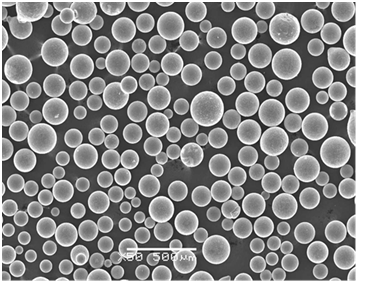
Merkmale von martensitaushärtendem Stahl
Martensitaushärtender Stahl ist bekannt für seine Kombination mechanischer Eigenschaften, die mit anderen Werkstoffen nur schwer zu erreichen sind. Im Folgenden werden einige der bemerkenswertesten Merkmale erläutert, die Maraging-Stahl zu einem bevorzugten Werkstoff für anspruchsvolle Anwendungen machen.
1. Außergewöhnliche Stärke
Martensitaushärtender Stahl ist bekannt für seine extrem hohe Zugfestigkeit, die oft 2000 MPa übersteigt. Diese unglaubliche Festigkeit wird durch den Alterungsprozess erreicht, bei dem sich intermetallische Verbindungen ablagern, die die Struktur des Stahls verstärken.
2. Hohe Zähigkeit
Im Gegensatz zu vielen anderen hochfesten Stählen weist Maraging-Stahl eine ausgezeichnete Zähigkeit auf. Dieses Gleichgewicht zwischen Festigkeit und Zähigkeit ist entscheidend für Anwendungen, bei denen die Materialien Stößen oder Belastungen standhalten müssen, ohne zu brechen.
3. Niedriger Kohlenstoffgehalt
Der extrem niedrige Kohlenstoffgehalt von martensitaushärtendem Stahl (in der Regel weniger als 0,03%) sorgt dafür, dass er dehnbar und schweißbar bleibt. Dies ist ein wesentlicher Vorteil gegenüber anderen hochfesten Stählen, die spröde und schwer zu bearbeiten sind.
4. Hervorragende Bearbeitbarkeit
Trotz seiner hohen Festigkeit ist Maraging-Stahl relativ leicht zu bearbeiten. Er kann ohne übermäßigen Werkzeugverschleiß zu komplexen Bauteilen geformt und verarbeitet werden, was ihn ideal für feinmechanische Anwendungen macht.
5. Widerstandsfähigkeit gegen Korrosion
Maraging-Stahl ist zwar nicht so korrosionsbeständig wie rostfreier Stahl, bietet aber eine gute Korrosionsbeständigkeit, insbesondere bei hohem Nickelgehalt. Diese Eigenschaft ist in Umgebungen von Vorteil, in denen das Material Feuchtigkeit oder Chemikalien ausgesetzt sein kann.
6. Wärmebehandlungsverfahren
Der einzigartige Alterungsprozess von Maraging-Stahl ist der Schlüssel zu seinen hervorragenden Eigenschaften. Der Stahl wird zunächst bei hoher Temperatur lösungsgeglüht, um eine weiche martensitische Struktur zu bilden, und dann bei niedrigerer Temperatur gealtert, um härtende Partikel auszuscheiden. Dieser zweistufige Prozess erhöht sowohl die Festigkeit als auch die Zähigkeit.
Arten von Martensitaushärtender Stahl
Martensitaushärtender Stahl ist in verschiedenen Güten erhältlich, die jeweils auf bestimmte Anwendungen und Leistungsanforderungen zugeschnitten sind. Die verschiedenen Sorten werden in der Regel nach ihrer Nennstreckgrenze in Tausend psi (ksi) kategorisiert.
| Klasse | Zusammensetzung | Streckgrenze (ksi/MPa) | Beschreibung |
|---|---|---|---|
| Martensitaushärtung 200 | 18% Ni, 8% Co, 4% Mo, 0,2% Ti, Rest Fe | 200 ksi / 1379 MPa | Niedrigste Festigkeitssorte, die für weniger anspruchsvolle Anwendungen verwendet wird. |
| Martensitaushärtung 250 | 18% Ni, 8,5% Co, 5% Mo, 0,2% Ti, Rest Fe | 250 ksi / 1724 MPa | Die am häufigsten verwendete Sorte, die ein gutes Gleichgewicht zwischen Festigkeit und Zähigkeit bietet. |
| Martensitaushärtung 300 | 18% Ni, 9% Co, 5% Mo, 0,3% Ti, Rest Fe | 300 ksi / 2068 MPa | Höhere Festigkeit, wird in der Luft- und Raumfahrt und im Werkzeugbau eingesetzt. |
| Martensitaushärtung 350 | 18% Ni, 12% Co, 5% Mo, 0,4% Ti, Rest Fe | 350 ksi / 2413 MPa | Höchste Festigkeitssorte, die in kritischen Anwendungen eingesetzt wird. |
| Martensitaushärtbares C-250 | Ähnlich wie Maraging 250, aber mit etwas anderen Legierungselementen. | 250 ksi / 1724 MPa | Variante mit unterschiedlichen Alterungseigenschaften. |
| Martensitaushärtbares C-300 | Ähnlich wie Maraging 300 mit leichten Änderungen in der Zusammensetzung. | 300 ksi / 2068 MPa | Bietet eine etwas bessere Schweißbarkeit und Bearbeitbarkeit. |
| Martensitaushärtender T-250 | Variante mit Titanmodifikationen für verbesserte Zähigkeit. | 250 ksi / 1724 MPa | Bessere Leistung bei kryogenen Temperaturen. |
| Maraging T-300 | Mit Titan verstärkte Variante von Maraging 300 für bessere Zähigkeit bei hohen Festigkeiten. | 300 ksi / 2068 MPa | Einsatz in hochbelasteten Anwendungen der Luft- und Raumfahrt. |
| Martensitaushärtung 18Ni | 18% Ni, 7% Co, 4,8% Mo, 0,15% Ti, Rest Fe | 240 ksi / 1655 MPa | Allgemein verwendbare Qualität mit ausgewogenen Eigenschaften. |
| Martensitaushärtbares 18Ni(300) | Modifizierte Version von 18Ni für Anwendungen mit höherer Festigkeit. | 300 ksi / 2068 MPa | Wird in Hochleistungswerkzeugen und -formen verwendet. |
Jede Sorte ist so konzipiert, dass sie spezifische Leistungskriterien erfüllt, so dass für jede Anwendung das richtige Material zur Verfügung steht.
Anwendungen von martensitaushärtendem Stahl
Martensitaushärtender Stahl eignet sich aufgrund seiner einzigartigen Eigenschaften für eine Vielzahl von Hochleistungsanwendungen in verschiedenen Branchen. Sehen wir uns an, wo Maraging-Stahl häufig eingesetzt wird:
| Industrie | Anmeldung | Beschreibung |
|---|---|---|
| Luft- und Raumfahrt | Flugzeugfahrwerke, Gehäuse von Raketenmotoren | Das hohe Verhältnis von Festigkeit zu Gewicht macht es ideal für Bauteile in der Luft- und Raumfahrt. |
| Werkzeugbau | Druckgussformen, Spritzgussformen, Extrusionswerkzeuge | Hervorragende Bearbeitbarkeit und Haltbarkeit bei hoher Belastung und Temperatur. |
| Automobilindustrie | Getriebekomponenten, Zahnräder, Hochleistungswellen | Wird aufgrund seiner Festigkeit und Zähigkeit in Hochleistungsfahrzeugen verwendet. |
| Verteidigung | Raketenhülsen, Geschützrohre, gepanzerte Fahrzeuge | Bietet eine hohe Festigkeit und Verformungsbeständigkeit für wichtige Verteidigungskomponenten. |
| Sportartikel | Golfschlägerköpfe, Fechtklingen | Leicht und dennoch stabil, perfekt für Hochleistungssportgeräte. |
| Kernkraft | Reaktorkomponenten, Strahlungsabschirmung | Aufgrund seiner Langlebigkeit und Strahlungsbeständigkeit wird es in nuklearen Anwendungen eingesetzt. |
| Marine | U-Boot-Komponenten, Teile für Marineschiffe | Dank seiner guten Korrosionsbeständigkeit ist es für den Einsatz in Meeresumgebungen geeignet. |
| Medizinische | Chirurgische Instrumente, orthopädische Implantate | Biokompatibilität und Festigkeit machen es ideal für medizinische Geräte. |
| Energie | Turbinenschaufeln, Hochdruckventile | Verwendung im Energiesektor aufgrund seiner Hochtemperaturbeständigkeit. |
| Industrielle Ausrüstung | Lager, Federn, Befestigungselemente | Sorgt für Langlebigkeit und Zuverlässigkeit in Industriemaschinen. |
Besonderer Hinweis: Additive Fertigung
Maraging-Stahl ist auch im Bereich der additiven Fertigung (3D-Druck) beliebt. Aufgrund seiner hervorragenden Pulvereigenschaften und mechanischen Leistung eignet er sich ideal für die Herstellung komplexer, hochfester Teile mit Präzision.
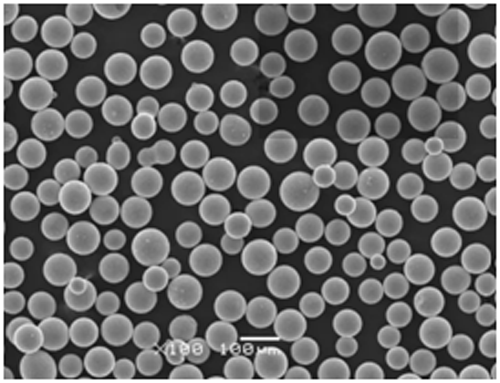
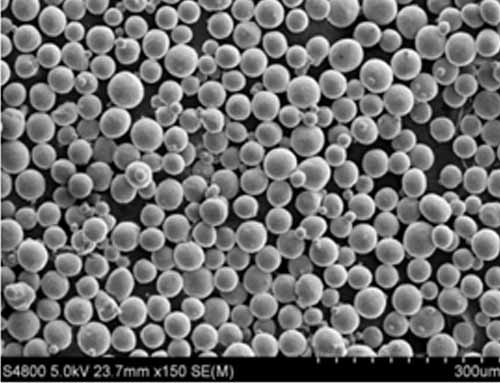

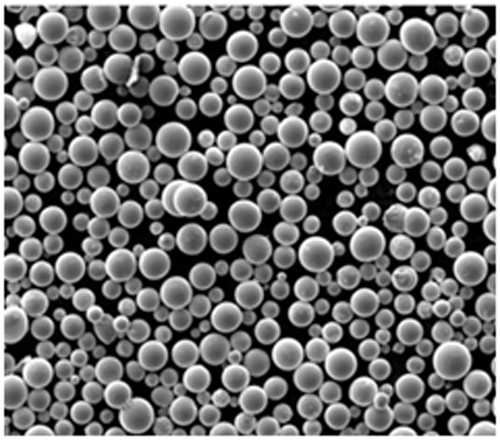


Spezifikationen und Normen
Die Kenntnis der Spezifikationen und Normen für martensitaushärtenden Stahl ist von entscheidender Bedeutung, um sicherzustellen, dass das Material die erforderlichen Anforderungen für bestimmte Anwendungen erfüllt.
| Spezifikation/Standard | Beschreibung |
|---|---|
| ASTM A538/A538M | Standardspezifikation für hochfeste, niedrig legierte Stahlbleche. |
| AMS 6521 | Werkstoffspezifikation für die Luft- und Raumfahrt für martensitaushärtenden Stahl in lösungsgeglühter Form. |
| MIL-S-46850 | Militärische Spezifikation für martensitaushärtenden Stahl, die eine qualitativ hochwertige Produktion gewährleistet. |
| DIN 1.2709 | Europäische Norm für martensitaushärtenden Stahl, der im Werkzeugbau und in der Luft- und Raumfahrt verwendet wird. |
| SAE J467 | Norm für die chemische Zusammensetzung von martensitaushärtenden Stählen. |
| EN 10088-2 | Europäische Norm für nichtrostende Stähle, einschließlich martensitaushärtender Stähle. |
| ISO 4957 | Internationale Norm für Werkzeugstähle, einschließlich martensitaushärtender Stähle. |
| UNS K93120 | Unified Numbering System (UNS) Bezeichnung für eine gängige martensitaushärtende Stahlsorte. |
| BS 4659 | Britische Norm für Werkzeug- und Gesenkstähle, einschließlich martensitaushärtender Stähle. |
| AISI 18Ni(250) | Bezeichnung des American Iron and Steel Institute (AISI) für eine bestimmte Sorte. |
Diese Spezifikationen gewährleisten, dass martensitaushärtende Stahlerzeugnisse eine gleichbleibende Qualität und Leistung aufweisen, so dass Ingenieure und Hersteller beruhigt sein können.
Lieferanten und Preisgestaltung
Einen zuverlässigen Lieferanten zu finden und die Preise für martensitaushärtenden Stahl zu verstehen, kann eine schwierige Aufgabe sein. Hier ist eine Tabelle, die Ihnen bei diesem wichtigen Aspekt helfen soll:
| Anbieter | Standort | Verfügbare Klassen | Preisgestaltung (USD pro kg) | Anmerkungen |
|---|---|---|---|---|
| Tischlertechnik | Vereinigte Staaten | Martensitaushärtung 250, 300, 350 | $50 – $75 | Führender Anbieter mit einer breiten Palette von Sorten. |
| Böhler-Uddeholm | Österreich | Martensitaushärtung 300, 350 | $55 – $80 | Hochwertiger europäischer Hersteller. |
| Dynamische Metalle | Vereinigtes Königreich | Martensitaushärtung 200, 250, 300 | $45 – $70 | Spezialisiert auf die Märkte Luft- und Raumfahrt und Verteidigung. |
| Hitachi Metalle | Japan | Martensitaushärtung 300, 350, T-300 | $60 – $85 | Berühmt für Präzision und hochwertige Stähle. |
| Allegheny-Technologien | Vereinigte Staaten | Martensitaushärtbares 18Ni(250), 18Ni(300) | $52 – $78 | Starker Fokus auf Innovation und Qualität. |
| VSMPO-AVISMA | Russland | Martensitaushärtung 250, 300 | $40 – $65 | Günstige Preise für Großaufträge. |
| Sandvik Werkstoffe | Schweden | Martensitaushärtbares C-250, C-300 | $48 – $73 | Ausgezeichneter Kundendienst und technische Unterstützung. |
| Edelstahl Witten-Krefeld | Deutschland | Martensitaushärtung 300, 18Ni(300) | $50 – $76 | Bekannt für fortschrittliche Fertigungsverfahren. |
| Präzisionsstahl | Indien | Martensitaushärtung 200, 250, 350 | $42 – $68 | Kostengünstige Lösungen für Großprojekte. |
| Nippon Steel | Japan | Martensitaushärtung 250, 300, T-250 | $58 – $82 | Schwerpunkt auf Hochleistungsstählen für die Luft- und Raumfahrt. |
Die Preise können je nach Sorte, Auftragsvolumen und Marktbedingungen variieren, weshalb es wichtig ist, sich direkt an die Lieferanten zu wenden, um Angebote einzuholen.
Vorteile und Benachteiligungen
Martensitaushärtender Stahl bietet zahlreiche Vorteile, hat aber auch einige Nachteile. Hier ist ein vergleichender Überblick:
| Vorteile | Benachteiligungen |
|---|---|
| Hohe Festigkeit: Unerreichte Zugfestigkeit. | Kosten: Teurer als andere Stähle. |
| Zähigkeit: Ausgezeichnete Schlagfestigkeit. | Korrosionsbeständigkeit: Nicht so gut wie rostfreier Stahl. |
| Bearbeitbarkeit: Trotz der Härte leicht zu bearbeiten. | Schweißeignung: Erfordert eine sorgfältige Kontrolle, um Risse zu vermeiden. |
| Stabilität der Abmessungen: Minimaler Verzug bei der Wärmebehandlung. | Eingeschränkte Lieferanten: Im Vergleich zu anderen Stählen gibt es weniger Hersteller. |
| Vielseitigkeit: Geeignet für eine breite Palette von Anwendungen. | Empfindlichkeit der Wärmebehandlung: Genaue Kontrolle während der Alterung erforderlich. |
Die Kenntnis dieser Vor- und Nachteile hilft Ihnen bei der Entscheidung, ob martensitaushärtender Stahl das richtige Material für Ihre spezielle Anwendung ist.
Vergleich von Martensitaushärtender Stahl Klassen
Die Wahl der richtigen Maraging-Stahlsorte kann schwierig sein. Hier finden Sie einen Vergleich einiger gängiger Stahlsorten nebeneinander:
| Eigentum | Martensitaushärtung 200 | Martensitaushärtung 250 | Martensitaushärtung 300 | Martensitaushärtung 350 |
|---|---|---|---|---|
| Streckgrenze (MPa) | 1379 | 1724 | 2068 | 2413 |
| Zugfestigkeit (MPa) | 1448 | 1793 | 2137 | 2482 |
| Dehnung (%) | 12 | 10 | 8 | 6 |
| Härte (HRC) | 48-50 | 52-54 | 54-56 | 58-60 |
| Zähigkeit | Hoch | Sehr hoch | Hoch | Mittel |
| Bearbeitbarkeit | Ausgezeichnet | Sehr gut | Gut | Messe |
| Schweißeignung | Sehr gut | Gut | Messe | Schlecht |
| Anwendungen | Automobilindustrie, Marine | Luft- und Raumfahrt, Werkzeugbau | Luft- und Raumfahrt, Verteidigung | Verteidigung, Nuklear |
Mit Hilfe dieser Tabelle können Sie schnell feststellen, welche Maraging-Stahlsorte für Ihre Anforderungen am besten geeignet ist.
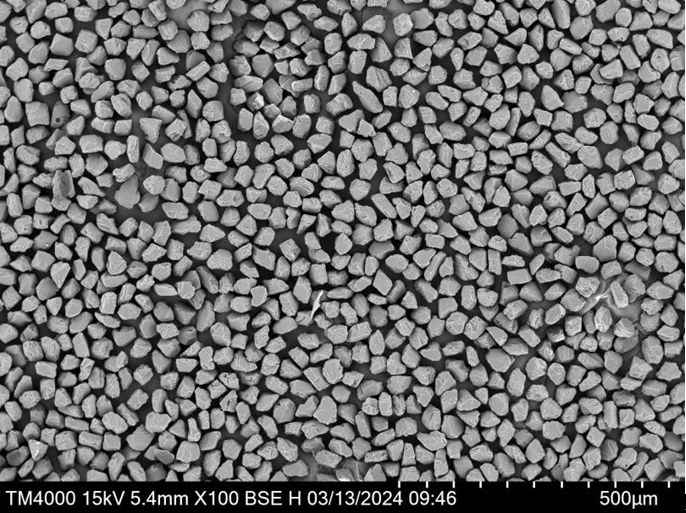
FAQs
Um häufige Fragen zu martensitaushärtendem Stahl zu beantworten, finden Sie hier einen Abschnitt mit häufig gestellten Fragen (FAQ), der Ihnen helfen kann, einige der komplizierteren Details zu klären:
| Frage | Antwort |
|---|---|
| Was ist martensitaushärtender Stahl? | Martensitaushärtender Stahl ist eine hochfeste, kohlenstoffarme Stahllegierung, die für ihre außergewöhnliche Zähigkeit und Bearbeitbarkeit bekannt ist. |
| Wie wird martensitaushärtender Stahl hergestellt? | Er wird durch eine Kombination aus Lösungsglühen und Alterung hergestellt, bei der sich intermetallische Verbindungen im Stahl ablagern. |
| Welche Arten von Maraging-Stahl gibt es? | Zu den gebräuchlichen Sorten gehören Maraging 200, 250, 300 und 350, die jeweils unterschiedliche Festigkeits- und Zähigkeitswerte aufweisen. |
| Was sind die typischen Anwendungen? | Die Anwendungen reichen von Komponenten für die Luft- und Raumfahrt über Werkzeuge und Automobilteile bis hin zu Sportartikeln. |
| Wie ist Maraging-Stahl im Vergleich zu anderen Stählen? | Er bietet im Vergleich zu anderen hochfesten Stählen eine höhere Festigkeit und Zähigkeit, allerdings zu höheren Kosten. |
| Kann martensitaushärtender Stahl geschweißt werden? | Ja, aber es erfordert eine sorgfältige Kontrolle, um Probleme wie Rissbildung zu vermeiden. Häufig ist eine Wärmebehandlung nach dem Schweißen erforderlich. |
| Ist martensitaushärtender Stahl korrosionsbeständig? | Es bietet eine gute Korrosionsbeständigkeit, ist aber nicht so widerstandsfähig wie rostfreier Stahl. Oberflächenbehandlungen können dies verbessern. |
| Was ist der Alterungsprozess? | Die Alterung ist ein Wärmebehandlungsprozess, der Maraging-Stahl durch die Ausscheidung von Härtepartikeln im Material stärkt. |
| Warum nennt man es martensitaushärtenden Stahl? | Der Name setzt sich aus martensitisch" und alternd" zusammen und spiegelt den einzigartigen Härtungsprozess des Stahls wider. |
| Wo kann ich Maraging-Stahl kaufen? | Martensitaushärtender Stahl kann von spezialisierten Anbietern wie Carpenter Technology, Böhler-Uddeholm und Dynamic Metals bezogen werden. |
Schlussfolgerung
Martensitaushärtender Stahl ist ein bemerkenswerter Werkstoff, der sich durch eine unvergleichliche Festigkeit, Zähigkeit und Bearbeitbarkeit auszeichnet. Ob Sie nun in der Luft- und Raumfahrt, im Verteidigungsbereich, in der Automobilindustrie oder in einer anderen Branche tätig sind, die Hochleistungswerkstoffe benötigt, Maraging-Stahl hat das Potenzial, Ihre Erwartungen zu erfüllen und zu übertreffen. Wenn Sie die Zusammensetzung, die Eigenschaften und die Anwendungen von Maraging-Stahl kennen, können Sie fundierte Entscheidungen darüber treffen, welche Sorte und welcher Lieferant Ihren Anforderungen am besten entspricht.
Dieser Leitfaden bietet einen umfassenden Überblick über martensitaushärtender Stahlvon seiner grundlegenden Zusammensetzung bis hin zu den komplizierten Details seiner verschiedenen Sorten und Anwendungen. Ganz gleich, ob Sie Materialien für ein wichtiges Projekt auswählen oder einfach mehr über diese unglaubliche Legierung erfahren möchten, dieser Artikel sollte Ihnen als wertvolle Ressource dienen.

